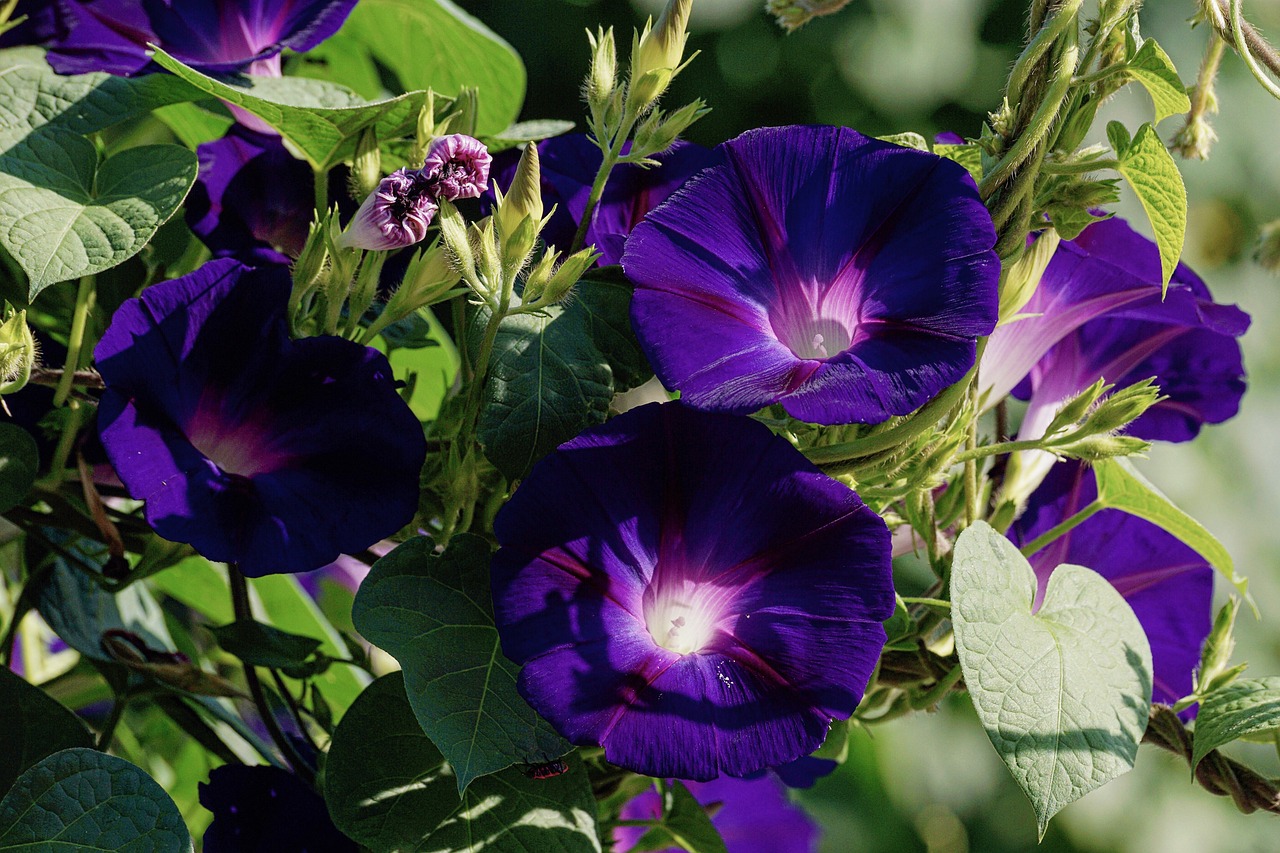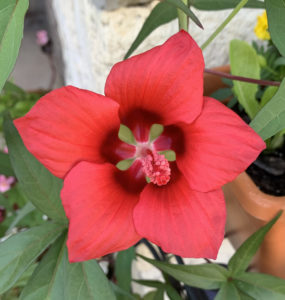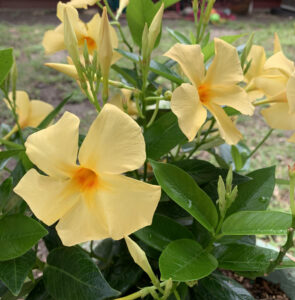Morning glories are trumpet-shaped flowers that last one day, blooming in the early morning and closing, usually, in the afternoon. They can add a pop of color to any garden and are easy to grow. They attract butterflies and hummingbirds, which are great pollinators for your garden. In this article, you will learn everything you need to know about growing this beautiful, free-spirited flower.
Seeds
Like okra, hibiscus, and nasturtium seeds, morning glory seeds have a thick seed coat that can benefit from a technique called scarification. Scarification involves carefully nicking or “scarring” the seed coat with a knife or sandpaper to allow the seed embryo access to water.
After scarification, place the nicked seeds into water for about 24 hours, then remove and plant. This process helps accelerate germination. If you feel unsure about scarring the seeds, you can still improve the germination rate by skipping the scarification step and simply soaking them in water for 24 hours.
It is important to note that morning glory seeds are toxic, especially if consumed in large quantities. Therefore, keep them away from small children and pets. The flowers, however, are not harmful.
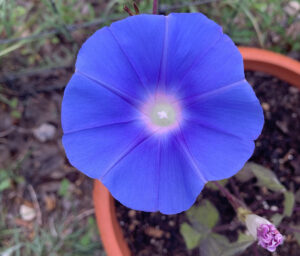
This article contains affiliate links. If you make a purchase using one of these links, I will receive a very small commission at no additional cost to you, and it will help me maintain this website. Rest assured, I only recommend products I actually like!
How to Plant
If planting directly into the soil, wait until the last frost date has passed and the soil temperature is at least 65°F (18°C). Choose well-draining soil and plant the seeds about 1/2 inch (1.25 cm) deep and approximately 8 to 12 inches (20 to 30 cm) apart. Be sure to keep the soil moist but not soggy until the seeds sprout, which should occur between 5 and 15 days after planting.
If starting seeds indoors for transplant, plant seeds in a good starter mix about four to six weeks before the last spring frost. Make sure the seed pots are in a warm area that receives good light. Indoor temperatures need to be between 60–85°F (18-30°C). Be sure to harden off the seedlings before transplanting outdoors.
This garden beauty requires six to eight hours of full sun in order to bloom, so be sure to choose a sunny location. Because they are prolific, many plant them in containers to restrict their spread while still enjoying ample growth.
Depending on the variety, blooms are pink, red, magenta, purple, blue, and white. They are either one solid color or have multi-colored, striped patterns. Most varieties do not have a scent.

How to Care For Morning Glories
Morning glories are vining plants, so once established, they will need support to grow vertically. This is why they are often planted next to structures like fences, mailboxes, cattle panel arches, trellises, sheds, or pergolas. Their greenery and blooms create a stunning visual interest.
This vining plant requires regular watering, especially during hot weather. Mulching around the plant will help the soil retain moisture. Some varieties, like the bush and dwarf, are more heat and drought-tolerant.
Plants will flower from early summer to the first fall frost. To ensure continuous blooms, fertilize once a month during the growing season with a low nitrogen fertilizer. Over fertilization may cause the vines to grow but will decrease the number of blooms.
There is no need to prune morning glories unless, of course, you want to confine their growth to a certain area. The plant will self-seed in most cases. If, for some reason, you do not want this to occur, you can remove the old blooms to prevent them from turning into seedpods. Removing old blooms will also encourage the plant to bloom more as it redirects its energy from making seeds to making flowers.
Morning glories are considered a perennial in more temperate climates and an annual in cooler climates.
Blooming Cousins
If you think that sweet potato plants have a similar looking bloom, you’re right. They are both members of the Convolvulaceae or Morning Glory family.
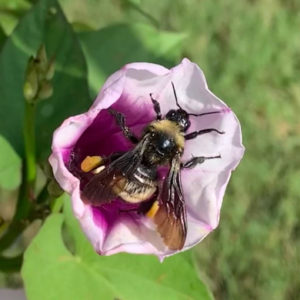
Faux Morning Glory
Sometimes, morning glories get a bad rap because they are confused with the noxious field bindweed. This invasive plant puts out deep roots, making it difficult to remove. The hearty weed can also overwinter in conditions that cannot support cultivated varieties.
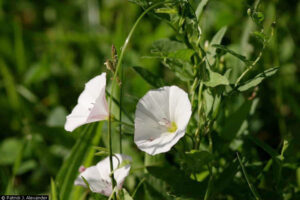
Diseases, Funguses, and Pests
Morning glories, like all plants, are susceptible to certain diseases, funguses, and pests. For example, pests like aphids and leaf miners may attack plants, while viruses like fusarium wilt, leaf spot, and rust also target the plants.
Morning glories are easy to grow, given the right conditions. They are a wonderful addition to any garden as they attract pollinators and provide beautiful vining greenery and bright, eye-catching flowers.
Thank you for reading this article! If you found it helpful, please consider sharing it with others via email and social media!
